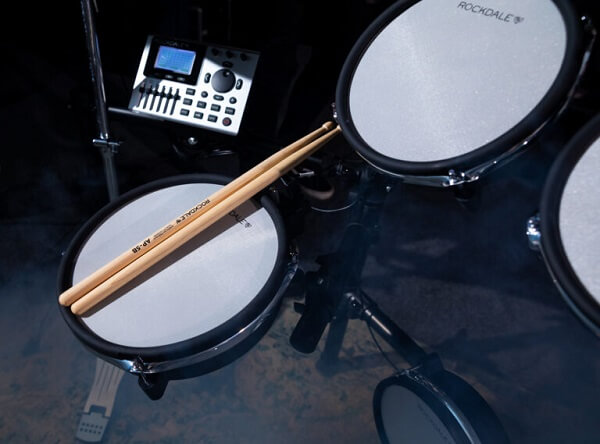Main points
1. Cleaning and tidying up. Cleaning electronic drums starts with removing dust and dirt. Use a soft, dry cloth to wipe down the drum pads and the kit’s housing. For more stubborn dirt, a slightly damp cloth can be used. It’s crucial to avoid using aggressive cleaning agents to prevent damage to the instrument’s surface.
2. Inspection and adjustment. Regularly inspect drums, pedals, and other components. Check the condition of the pads, ensuring all bolts and screws are securely fastened. Calibrate and adjust electronic modules as needed following the manufacturer’s recommendations.
3. Careful stick use. Use sticks suitable for electronic drums to avoid damaging the pads and sensors. Overly hard sticks can cause wear or damage to sensitive surfaces. Regularly check the condition of your sticks and replace them when necessary.
4. Proper connection and storage. When disconnecting cables, ensure you’re not creating unnecessary tension on the connectors. Store cables in dedicated containers to prevent tangling or damage. Turn off the electronic drum kit and unplug cables when not in use.
5. Screen and button care. If your electronic kit has a screen and control buttons, use a soft, dry cloth for cleaning. Avoid pressing too hard on the screen or buttons to prevent damage to the electronic components.
6. Use of stands and mounts. If you use drum stands or mounts, ensure they are securely fastened and not slipping. Proper installation promotes stability and prevents potential damage to your electronic drum kit.

Additional protection: cases and covers
For electronic drum kits, there are special cases designed to protect them during transportation. Drum kit manufacturers or third-party accessory producers specializing in musical instruments often develop these cases. A good case for an electronic drum kit provides protection against dust, scratches, and potential damage during transport. Some cases may include additional pockets for storing cables, pedals, and other accessories.
Drum kit covers are typically made from various materials designed to provide reliable protection for instruments against the impact of external factors – nylon, polyester, Cordura, fleece, polyurethane foam, and others.
Drumsticks protection
To store drumsticks, it is recommended to use special holders or bags designed for sticks. These accessories provide a convenient and secure place for storage, preventing the loss or damage of the drumsticks. Such holders can be attached to stands or other parts of your drum kit, ensuring easy access to the sticks during play. Additionally, using a bag protects the drumsticks from dust and moisture, which can affect their durability and sound quality.
Temperature and humidity concerns
Electronic drum kits are best stored in dry and moderate temperature conditions to ensure a long lifespan and reliable performance. The recommended temperature range for storing electronic drum kits typically ranges from +5°C to +35°C (41°F to 95°F). Avoid extreme temperature conditions, such as severe cold or high heat, as well as rapid temperature changes. This helps prevent potential issues with electronics, sensors, and other sensitive components.
It’s also crucial to avoid storing the instrument in high humidity areas, as this can lead to corrosion of contacts and other electronic problems.

By following these simple tips, you’ll keep your electronic drum kit in excellent condition, ready for creativity and musical exploration.